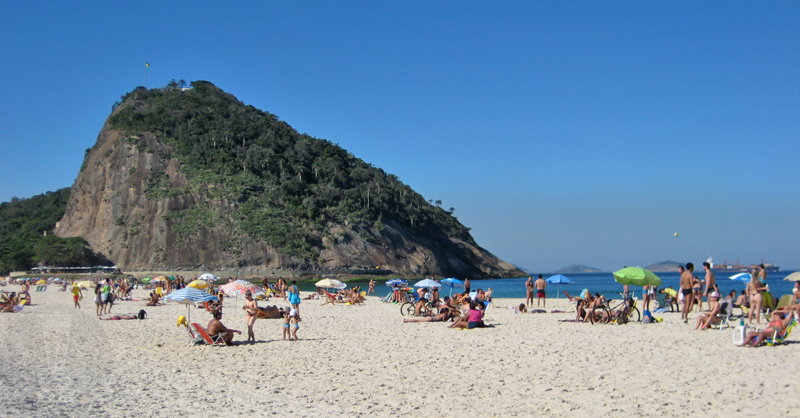
There wasn’t much English being tossed around on my flight from Canada to Brazil. Throughout the nearly eleven-hour trip, I heard Portuguese, Spanish, French, German – but very few words I understood. I shifted uneasily as we prepared for our arrival in Rio de Janeiro, practicing “Eu não falo Português” (I don’t speak Portuguese) repeatedly to myself, along with the handful of other phrases I had learned. I didn’t want to be lost from the start.
Traversing the airport, I was taken aback at how clean and sparse it was compared to the scenes of chaos portrayed in U.S. media. Representatives for the Rio Olympics lingered in areas throughout the building, in head-to-toe yellow and green, inquiring with anyone who looked lost. When the doors to baggage claim flew open, it was not the crazy, intimidating hysteria I had read about leading up to my trip. Just the usual congregation of friends and families waiting to meet loved ones.
Brazil surprised me from the beginning.
My driver slogged through Rio de Janeiro traffic for nearly an hour as I flipped through my phrasebook to find the right words. Though he had met me with a sign bearing my name, we quickly discovered that he spoke only Spanish and Portuguese, and I was limited in my local verbiage. He pointed out parts of the city as we flew by – the Christ, the central city area, various Olympic venues still in development. We agreed that futebol was good and traffic was bad, and laughed together as each one of us took turns wading into each other’s language.
I paused when we arrived at the hotel, taking in the views of Leme Beach and Copacabana along Rio de Janeiro’s Avenida Atlântica. They were similar to beaches the world over – white sweeping sands, clusters of people with towels and accessories planted along the water. Except that it was Brazil – the famous beaches of Brazil I had only seen in postcards – where bright green national flags waved in the wind as men peddling drinkable coconuts traversed the route, and swimsuits were tiny no matter the body shape and size. Skeletons of the upcoming Rio Olympics sprawled out on the sand – the half-built beach volleyball venue, a light blue Rio 2016 tented dome already up and ready to sell all the branded wares. The famous Christ statue on Corcovado – Cristo Redentor – posited high above the cityscape keeping an eye on us all.
“Rio is a mix of gorgeous nature and the city,” our tour guide, Marcelo Elias of Be Free Tur, explained during our day tour of the city. “As a beach city, people are more relaxed, even with all the problems we face every day. A lot of foreigners think that Brazil is a ‘nature and party’ country only – that’s far from being truth. We also have a lot of history to be seen. Of course, the natural attractions are really awesome but the historic sites, like the Largo do Boticário, are also very interesting.”
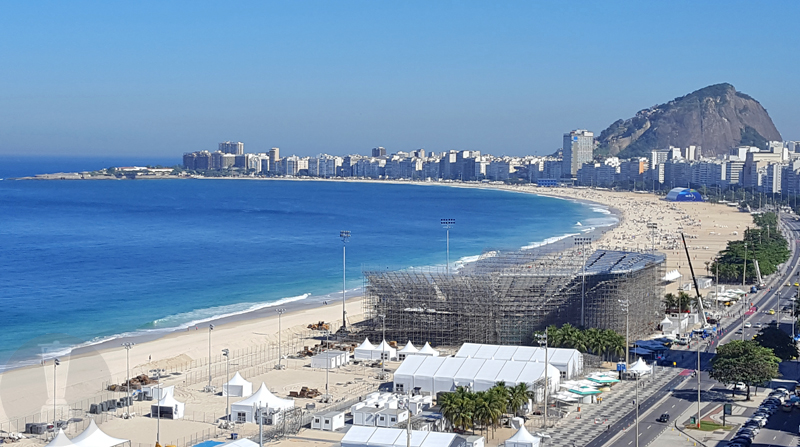
![Rio de Janeiro, Brazil | DAILYBLENDER.COM Rio de Janeiro, Brazil | [dailyblender.com]](https://dailyblender.com/wp-content/uploads/2016/07/Brazil2.jpg)
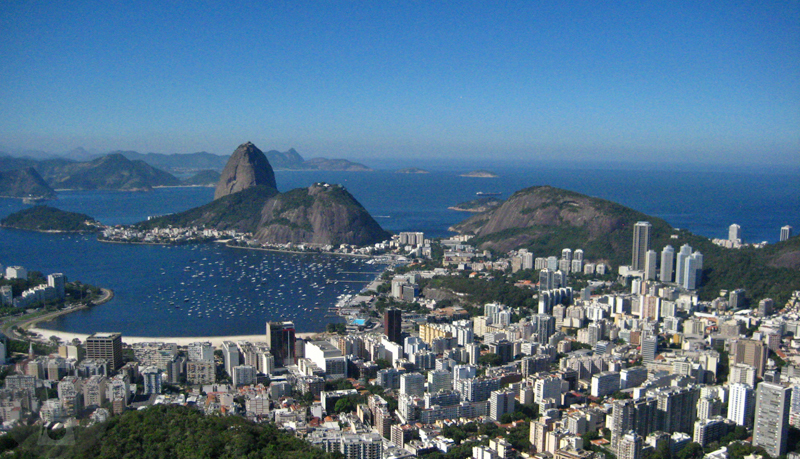
![Rio de Janeiro, Brazil | [dailyblender.com]](https://dailyblender.com/wp-content/uploads/2016/07/Brazil12.jpg)
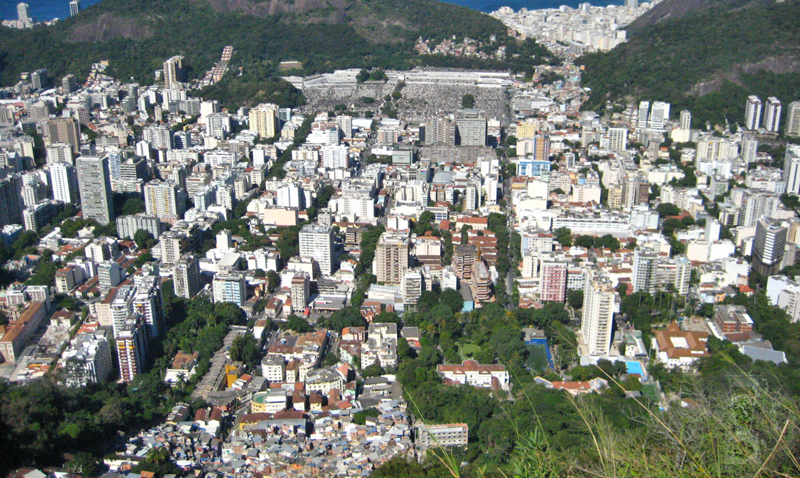
![Rio de Janeiro, Brazil | [dailyblender.com]](https://dailyblender.com/wp-content/uploads/2016/07/Brazil16.jpg)

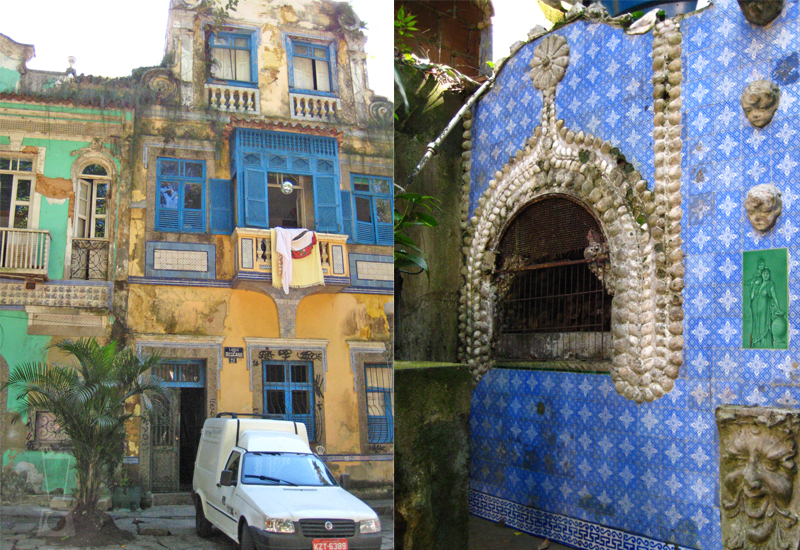


“It’s a common sense here that the money the government spent in the construction for the Olympics should have been invested in more urgent things: improving the public health system, the public education system and security,” Elias commented when I asked about the 2016 Rio Olympics. “The population asks for this for decades and the answer is always ‘we don’t have the money’. Suddenly, for the Games, the money appears. You need to provide to your own people good infrastructure and then try to organize big events. Take care of the country and the population first. But in the end, when the Games begin, I think everybody will enjoy and the atmosphere will be amazing, just like the World Cup two years back.”
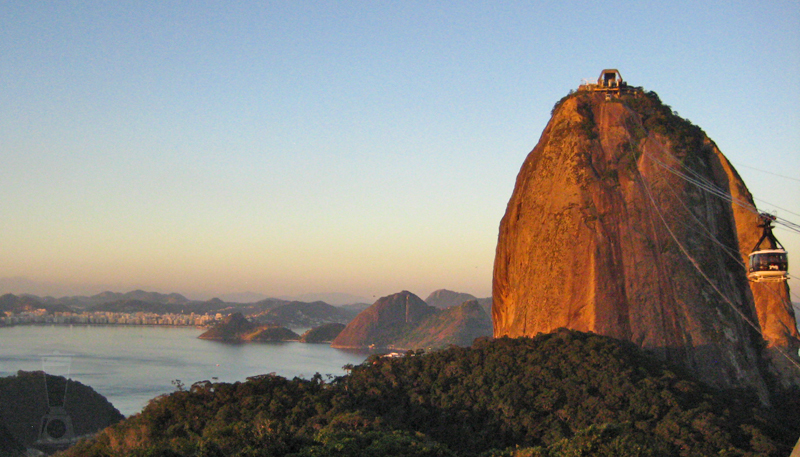
1. Be a smart traveler when you’re in Rio. “Take the same precautions that you would take in any big city,” said Elias. “Is it dangerous? A little bit. Do you need to be paranoid? Not really. If you are aware of the danger and take the usual precautions, all will be fine.” Smart travelers don’t cover themselves with flashy jewelry, they don’t carry all their foreign cash everywhere they go, and they don’t wander around with expensive cameras and purses asking trouble-inducing questions of strangers.
2. Don’t panic about Zika. I was so worried about the virus before I arrived, but locals are not, outside of the precautions to women who are pregnant or trying to get pregnant. The average Jane will get Brazilian mosquito bites – and survive them without major issue.
3. Avoid the favelas. Most people don’t visit the downtrodden areas of New York or Los Angeles, so why would you while you’re in Rio? There are over 400 favelas – or slums – in Rio and they’re all dangerous to outsiders. You can spot their colorful, homemade housing units across the city, and sometimes you catch a glimpse of police with large guns blocking their entrances. Take heed.
4. Copacabana, Ipanema, and Leblon are where you want to be when you’re in the city. I have nothing but great things to say about the Windsor Leme Hotel, which is right on Praia do Leme (Leme Beach) adjacent to Copacabana in Rio de Janeiro. The room rate includes a really impressive breakfast buffet, a gorgeous rooftop pool and patio, and a bevy of kind, helpful staff.
5. Don’t be afraid to use your limited Portuguese. Locals are really excited to meet respectful travelers who go the distance to learn the language. Please and thank you, in any language, goes a long way.
6. Coordinate your daily city adventures through your hotel. It’s the safest way to travel.
7. Enjoy the caipirinhas and local fare. Cachaça is the local spirit, a rum-type liqueur often muddled with limes, pomegranates, or abacaxi (pineapple). They’re strong and tasty. There’s also a ton of seafood and beef. Indulge in the pão de queijo (gluten-free bread balls with cheese). Enjoy the paellas and moqueca.
~Jennifer Matthewson
Photo credit: Jennifer Matthewson / Daily Blender
